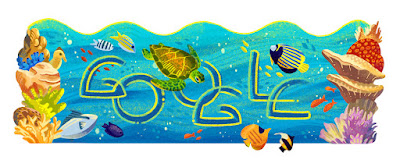Tuesday, August 14, 2018
27th Anniversary of Bunaken National Park
The Indonesian government set aside five islands and surrounding waters in 1991, providing protection to the 58 different types of coral and more than 90 species of fish located in Bunaken National Park. Located to the north of the island of Sulawesi, Bunaken National Park is a place where Hawksbill turtles forage on reefs amid colorful schools of damselfish, clownfish, angelfish, and a dazzling array of marine dwellers.
Spectacular sea creatures are not the only inhabitants of the 280-square-mile marine park, located in the northern part of Sulawesi province. There are some 20,000 human beings, most of whom rely on fishing for at least part of their daily nutrition. Groupers, snappers, and napoleon wrasse feed along the vast coral walls that contain an impressive amount of biodiversity—nearly 70% percent of the marine species found in this part of the world.
Although illegal fishing still occurs, and coral is vulnerable to climate change, the Indonesian government applied for the park to be listed as one of UNESCO’s list of World Heritage Sites, which provides additional protections. Indonesian schools educate students about the fragility of the ecosystem they live within, ensuring that future generations learn how to safeguard this national treasure.
14.08.2018-Tuesday-செவ்வாய்-Doodle-27th Anniversary of Bunaken National Park-JPEG.
Subscribe to:
Post Comments (Atom)


The Indonesian government set aside five islands and surrounding waters in 1991, providing protection to the 58 different types of coral and more than 90 species of fish located in Bunaken National Park. Located to the north of the island of Sulawesi, Bunaken National Park is a place where Hawksbill turtles forage on reefs amid colorful schools of damselfish, clownfish, angelfish, and a dazzling array of marine dwellers.
ReplyDeleteSpectacular sea creatures are not the only inhabitants of the 280-square-mile marine park, located in the northern part of Sulawesi province. There are some 20,000 human beings, most of whom rely on fishing for at least part of their daily nutrition. Groupers, snappers, and napoleon wrasse feed along the vast coral walls that contain an impressive amount of biodiversity—nearly 70% percent of the marine species found in this part of the world.
Although illegal fishing still occurs, and coral is vulnerable to climate change, the Indonesian government applied for the park to be listed as one of UNESCO’s list of World Heritage Sites, which provides additional protections. Indonesian schools educate students about the fragility of the ecosystem they live within, ensuring that future generations learn how to safeguard this national treasure.